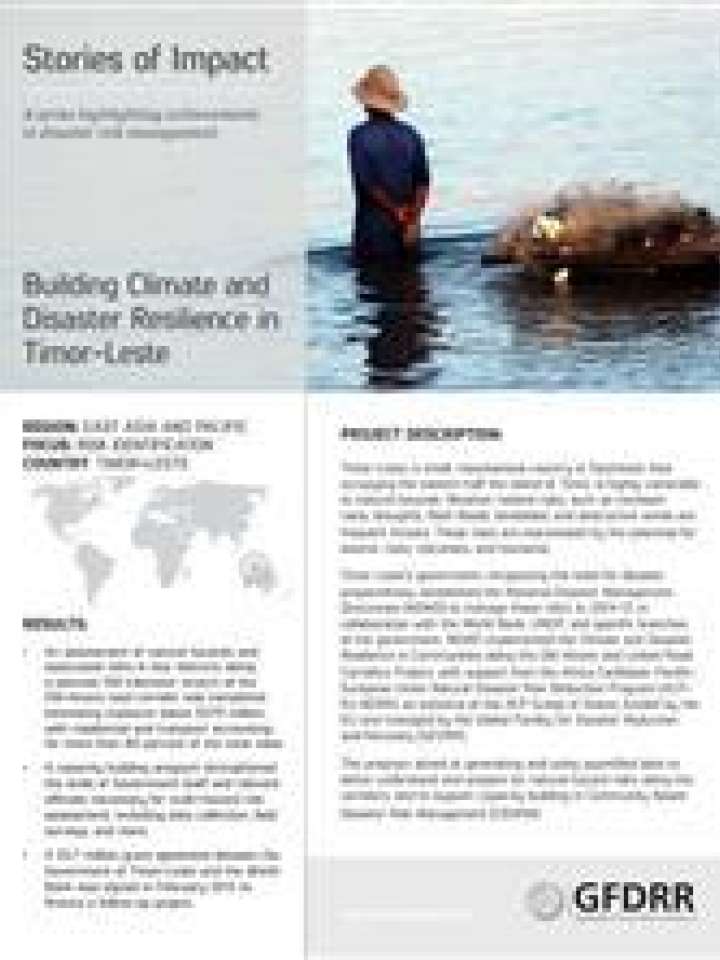Stories of impact: Building climate and disaster resilience in Timor-Leste
This document provides a quick overview of a project aimed at generating and using quantified data to better understand and prepare for natural hazard risks along the corridors, and to support capacity building in Community Based Disaster Risk Management (CBDRM). The government of Timor-Leste, recognizing the need for disaster preparedness, established the National Disaster Management Directorate (NDMD) to manage these risks in partnership with the Global Facility for Disaster Risk Reduction (GFDRR), the World Bank, UNDP, and specific branches of the government. The assessment will help inform a community-based risk management system to be piloted under the next phase of the project in the 26 most vulnerable municipalities.
The results of this initiative include the following:
- An assessment of natural hazards and associated risks in four districts along a planned 100 kilometre stretch of the Dili-Ainaro road corridor was completed, estimating exposure above $570 million, with residential and transport accounting for more than 80 percent of the total value.
- A capacity building program strengthened the skills of Government staff and relevant officials necessary for multi-hazard risk assessment, including data collection, field surveys, and more.
- A $2.7 million grant agreement between the Government of Timor-Leste and the World Bank was signed in February 2015 to finance a follow-up project.
In addition, the document outlines lessons learned:
- Detailed data from multiple sources is critical for assessing natural hazard risks and building a disaster community-based disaster risk management strategy.
- Technology and capacity building are necessary to collect, manage, and make effective use of data.
This document is part of a series highlighting achievements in disaster risk management.
Explore further
